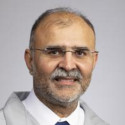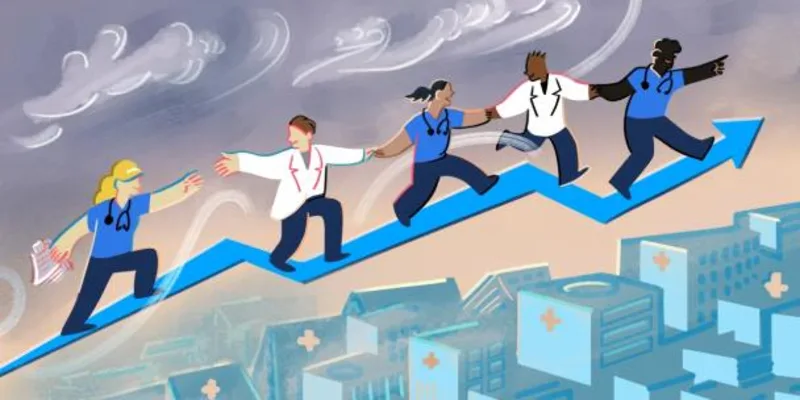Measles, one of the oldest and most contagious diseases known to humanity, has plagued societies for over a millennium. Despite being nearly eradicated in the 21st century, it has made a troubling comeback, threatening public health in ways many thought were consigned to history. From its earliest recorded descriptions to the modern-day challenges of vaccine hesitancy, measles remains a stark reminder of the importance of vaccination and public health vigilance.
Measles has been a significant cause of illness and death for centuries. Historical records trace its impact back to at least the 9th century, with Persian physician Rhazes providing one of the first detailed descriptions of the disease in the 10th century. Before the development of a vaccine, measles was nearly universal in childhood, infecting millions worldwide each year. In the U.S., it was a common and highly contagious disease, leading to frequent outbreaks. By the 1950s, nearly every child had contracted measles by the age of 15, resulting in an average of 400 to 500 deaths annually, along with thousands of cases of pneumonia and encephalitis.
The introduction of an effective vaccine in the 1960s drastically changed the landscape of measles in the U.S. Developed by Dr. John Enders and his colleagues, the measles vaccine utilized a weakened form of the virus to induce immunity. In 1968, an improved version was licensed and later incorporated into the measles, mumps, and rubella (MMR) vaccine. Initially, a single dose was recommended, but after measles outbreaks persisted, the CDC implemented a two-dose schedule in 1989. Today, children receive the first dose at 12-15 months and the second at 4-6 years. This two-dose regimen provides lifelong immunity. Thanks to widespread vaccination, measles was declared eliminated from the U.S. in 2000, meaning there was no continuous transmission for over 12 months. However, the disease has resurfaced in recent years due to declining vaccination rates and increased global travel.
Measles is one of the most contagious viral diseases, spreading through respiratory droplets when an infected person coughs or sneezes. The virus can linger in the air for up to two hours in enclosed spaces, making it highly contagious. Even brief exposure to an infected individual can result in transmission, with 90% of unvaccinated people in close contact becoming infected. Measles can also spread by touching contaminated surfaces and then touching the face. Symptoms usually appear 10 to 14 days after exposure, beginning with fever, cough, runny nose, and conjunctivitis (pink eye) before progressing to a widespread red rash. Due to its high transmissibility, even a small decline in vaccination rates can lead to widespread outbreaks.
In early 2025, a significant measles outbreak swept through Texas and New Mexico, resulting in 228 confirmed cases by March. Tragically, this outbreak claimed the lives of an unvaccinated child in Texas and an unvaccinated adult in New Mexico — marking the first measles-related deaths in the U.S. in a decade. The outbreak has been largely attributed to vaccine hesitancy, fueled by misinformation and skepticism, particularly in communities with high vaccine exemption rates. In Gaines County, Texas, where religious beliefs contribute to low immunization rates, measles spread rapidly. Alarmingly, some parents have revived the dangerous practice of "measles parties," intentionally exposing children to the virus in an attempt to build natural immunity. Health experts warn against this practice, as measles can cause severe complications, including pneumonia, encephalitis, and death. These factors have weakened herd immunity, allowing the virus to spread more easily.
One of the key reasons for the resurgence of measles in the U.S. is the decline in vaccination rates. According to the CDC, approximately 93% of kindergarten-aged children in the 2021-2022 school year received the MMR vaccine, leaving around 7% unprotected. This falls below the WHO recommended 95% coverage needed to prevent outbreaks. The issue extends beyond the U.S., as the COVID-19 pandemic disrupted vaccination programs worldwide, leaving an estimated 117 million children at risk of measles due to missed immunizations. As a result, both nationally and globally, measles cases have risen, demonstrating the crucial need for maintaining high vaccination coverage.
The recent measles outbreak serves as a reminder of how vulnerable society remains to contagious diseases. In an interconnected world where travel and migration are constant, diseases can quickly spread across borders. Vaccine-preventable illnesses such as measles, pertussis, and polio are making a resurgence in areas with declining immunization rates, posing a significant threat to public health. The erosion of trust in scientific and medical institutions, fueled by misinformation and social media, has further exacerbated the risk of outbreaks. If vaccination rates continue to decline, society could face the return of diseases that were once nearly eradicated, putting the most vulnerable populations — infants, the elderly, and immunocompromised individuals — at serious risk.
The resurgence of measles serves as a stark warning of how fragile public health gains can be when immunization rates decline. In a world where international travel and migration are constant, vaccine-preventable diseases can easily cross borders, reintroducing threats once thought to be eliminated. The erosion of trust in scientific and medical institutions — exacerbated by misinformation, social media influence, and ideological resistance to vaccines — has fueled growing skepticism about immunization. As a result, communities with low vaccination rates create pockets of vulnerability where diseases can spread rapidly, putting infants, immunocompromised individuals, and those unable to receive vaccines at significant risk. Beyond measles, this trend poses a broader danger by increasing susceptibility to other infectious diseases, potentially reversing decades of medical progress. To combat this, it is crucial to strengthen public health initiatives, reinforce science-based health education in schools, and implement policies that encourage higher vaccination rates, such as stricter exemption laws and targeted awareness campaigns in high-risk communities.
In response to the outbreak, the CDC has rapidly mobilized health experts, distributing thousands of MMR vaccine doses and issuing emergency health advisories in affected areas. However, logistical challenges, including vaccine shortages in regions like Austin, Texas, and resistance in certain communities, continue to hinder containment efforts. To protect against measles, individuals must take proactive steps, ensuring they and their families are fully vaccinated. Adults who are unsure of their immunization status should seek booster doses, especially before international travel. Clinicians must also play a more active role in addressing vaccine hesitancy, offering clear, evidence-based information to counter misinformation. Meanwhile, policymakers must consider stronger public health measures, including stricter vaccination mandates for schools and daycare centers, to prevent future outbreaks. Ultimately, the fight against measles — and other preventable diseases — is not just a medical issue but a societal responsibility. The ability to keep these illnesses at bay depends on collective action, informed decision-making, and a renewed commitment to science and public health.
What is your experience with treating outbreaks? Share in the comments!
Dr. Muhammad Rafique is a pediatric anesthesiologist in Maywood, IL, and is affiliated with Loyola University Medical Center. He is a professor of anesthesiology at the Stritch School of Medicine, Loyola University Chicago, IL. He specializes in pediatric cardiothoracic anesthesiology, pediatric anesthesiology, airway management, and regional anesthesiology.
Image by nobeastsofierce / Shutterstock







